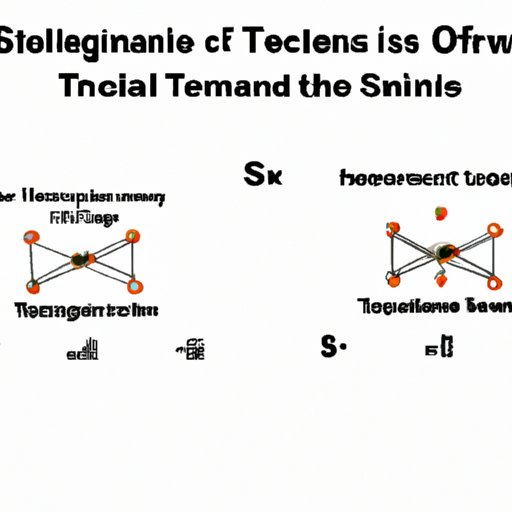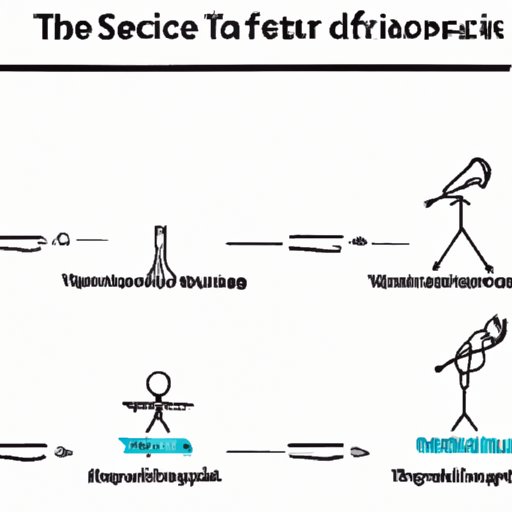I. Introduction
Scientific theories are fundamental to all sciences, from physics and astronomy to psychology and social sciences. However, there is often confusion about what scientific theories are and how they differ from facts, laws, and hypotheses. Some people even challenge their validity, claiming that science is just another belief system or that theories are mere opinions based on limited evidence.
This article aims to clear up this confusion and provide a deep dive into the nature, functions, and criteria of scientific theories. By unpacking the structure of scientific theories, exploring their evolution from hypotheses to established theories, debunking common misconceptions, examining their importance in advancing knowledge, evaluating their validity, comparing them to other theoretical frameworks, and analyzing their role in modern science, the article seeks to help readers appreciate the critical role of scientific theories in shaping our understanding of the world and in promoting innovations.
II. The Structure of Scientific Theories: Examining the Components
A scientific theory is a comprehensive explanation of a natural or social phenomenon that is supported by empirical evidence and can be used to make predictions. It is not just a hunch or a guess but a carefully constructed framework that integrates observations, data, hypotheses, and predictions. A theory is not a fact, but it can be supported or refuted by facts.
The main elements of a scientific theory include:
– Hypothesis: A tentative explanation or prediction of a phenomenon that can be tested by gathering and analyzing data.
– Data: Empirical evidence, such as observations, measurements, experiments, and simulations, that support or contradict a hypothesis.
– Explanation: A coherent and consistent interpretation of the data that accounts for the observed phenomena and their underlying mechanisms.
– Prediction: A statement about what is likely to happen under certain conditions or in the future, based on the theory’s explanation and the available evidence.
– Testing: The process of verifying or falsifying the theory by further gathering and analyzing data, and by comparing the predictions with the actual outcomes.
Scientific theories are often complex, dynamic, and subject to revision and refinement as new evidence or perspectives emerge. Some of the most famous and current scientific theories include:
– Evolution: The theory that explains how species change over time through natural selection, genetic variation, and adaptation.
– Relativity: The theory that describes the relationship between space and time, and the effects of gravity on the motion of objects, as formulated by Albert Einstein.
– Quantum mechanics: The theory that explains the behavior of matter and energy at the atomic and subatomic scales, and the phenomena of entanglement, superposition, and uncertainty.
It is important to note that theories are not the same as laws or facts. Laws are generalizations based on repeated observations or experiments that describe the patterns or regularities of natural phenomena. For example, Newton’s three laws of motion describe how objects move in relation to each other. Facts are empirical observations or measurements that can be objectively verified or confirmed, such as the boiling point of water at sea level. Theories, on the other hand, are explanatory frameworks that integrate and interpret facts and laws, and can be modified or supplemented based on new evidence or insights.
III. The Evolution of Scientific Theories: From Hypothesis to Theory
The process of scientific inquiry involves several stages, starting with observation and question, progressing through hypothesis and prediction, and culminating in experimentation and theory development. While the scientific method is not always a linear or straightforward process, it is guided by creativity, curiosity, and skepticism, which help generate, evaluate, and modify hypotheses and theories.
In theory construction, scientists use both inductive and deductive reasoning. Inductive reasoning involves making generalizations or hypotheses based on observations or patterns, while deductive reasoning involves testing hypotheses or predictions through experiments or observations.
The history of science is full of examples of how previously accepted theories were modified or replaced by new evidence or perspectives. For instance, the ancient model of the universe was geocentric, with the earth at the center and the sun and planets orbiting around it. However, the heliocentric theory, which placed the sun at the center and the planets revolving around it, superseded the geocentric theory based on empirical observations and mathematical calculations. Similarly, the phlogiston theory, which posited that all combustible materials contained an invisible element called phlogiston, was later replaced by the oxygen theory, which explained combustion as a chemical reaction that involved the combination of oxygen with other substances.
IV. Debunking Common Misconceptions About Scientific Theories
Despite their centrality in science, scientific theories are often misunderstood and misrepresented. Here are three common myths about scientific theories and the evidence that refutes them:
– Myth #1: Theories are just guesses or opinions.
Fact: Scientific theories are based on empirical evidence and are subjected to rigorous testing and evaluation. They are not mere hunches or guesses but are carefully constructed frameworks that offer explanations and predictions based on the available data.
– Myth #2: Theories are unproven or unfalsifiable.
Fact: While absolute proof is not possible in science, theories are supported by multiple lines of empirical evidence and can be tested by further experiments or observations. Moreover, theories can also be falsified by contradictory evidence or by better explanations that account for all the data.
– Myth #3. Theories are absolute and eternal truths.
Fact: Scientific theories are always provisional and subject to revision when new evidence or perspectives emerge. They are not immutable or dogmatic but evolve based on the dynamics of scientific inquiry and the discovery of new facts or phenomena.
V. The Importance of Scientific Theories in Advancing Knowledge
Scientific theories play a critical role in advancing knowledge and promoting innovations in various domains, from medicine and technology to environmental and social policies. Here are some of the reasons why scientific theories matter:
– Dynamic and cumulative: Scientific theories are dynamic and cumulative, integrating new evidence and modifying or refining existing frameworks over time. They reflect the best available knowledge and understanding of a particular phenomenon or domain and are constantly evolving through inquiry and analysis.
– Practical and technological applications: Scientific theories have practical and technological applications in various fields, such as engineering, medicine, and communications. For example, the theory of electromagnetism underlies many modern technologies, including computers, televisions, and cell phones.
– Interdisciplinary and international collaborations: Scientific theories often require interdisciplinary and international collaborations, as they involve multiple perspectives, methods, and approaches. For instance, the study of climate change requires input from atmospheric scientists, biologists, geologists, economists, and policymakers, as well as international agreements and cooperation.
– Impact on society and culture: Scientific theories have an impact on society and culture by shaping our values, beliefs, and attitudes. For example, the theory of evolution has influenced not only our understanding of biology and genetics but also our views on ethics, religion, and human nature.
VI. Evaluating the Validity of Scientific Theories: Criteria and Considerations
The validity of scientific theories is determined by several criteria and considerations, including:
– Explanatory power: The ability of the theory to provide a coherent and comprehensive explanation of the observed phenomena, and to account for any anomalies or exceptions.
– Predictive accuracy: The ability of the theory to make accurate and precise predictions about future events or outcomes, based on the available evidence and assumptions.
– Coherence: The internal consistency and logical coherence of the theory, and its compatibility with other related theories or frameworks.
– Simplicity: The simplicity or parsimony of the theory, in terms of the number and complexity of its assumptions and components.
– Testability: The ability of the theory to be tested by empirical evidence, either through experiments, observations, simulations, or other methods.
Evaluating the validity of a scientific theory involves weighing the strengths and weaknesses of the evidence and the theoretical frameworks, and considering alternative explanations or hypotheses. Peer review, replication, and verification are important mechanisms for ensuring the rigour and robustness of scientific theories. However, some theories are more difficult to test or verify than others, especially when they involve complex or speculative concepts or hypotheses, such as string theory or multiverse theory.

VII. The Comparison of Scientific Theories to Other Theoretical Frameworks
Scientific theories are often compared to other theoretical frameworks, such as metaphysical, religious, or pseudoscientific theories, which offer different or opposing explanations of natural or social phenomena. While these frameworks may share some similarities with scientific theories, they differ in several fundamental ways:
– Empirical evidence: Scientific theories are based on empirical evidence and are subject to empirical testing and evaluation, whereas other theoretical frameworks may rely on intuition, revelation, or belief.
– Predictive power: Scientific theories have predictive power and can be used to make accurate and precise predictions about future events or outcomes, whereas other theoretical frameworks may lack this ability.
